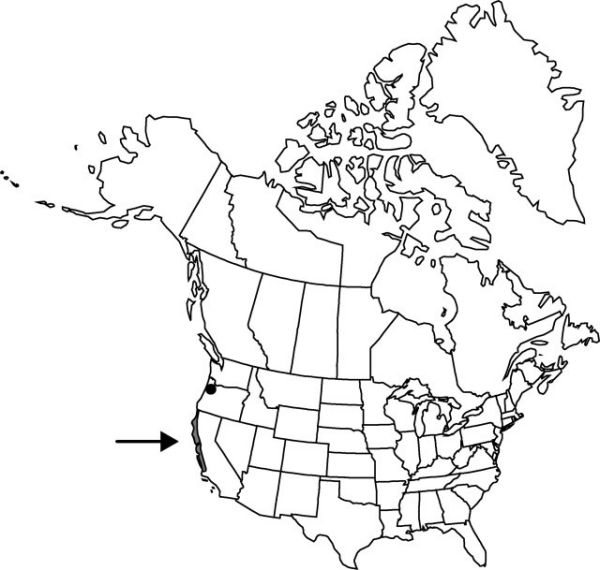Allium unifolium
Proc. Calif. Acad. Sci. 2: 112, fig. 35. 1863.
Bulbs solitary, replaced annually by new bulbs borne terminally on secondary rhizome; rhizomes 1–3, conspicuous, to 5 cm, smooth; parent bulbs disappearing by anthesis except for still-functional roots and bulb coat, ovoid to oblique-ovoid, 1–2 × 0.8–1.5 cm; outer coats not enclosing bulbs, pale brown, delicately cellular-reticulate, membranous, cells ± rectangular, without fibers; inner coats white, cells obscure, ± transversely elongate, contorted. Leaves persistent, green or withering from tip at anthesis, 2–3, basally sheathing, sheaths not extending much above soil surface; blade solid, flattened, sometimes carinate abaxially, ± falcate, 18–50 cm × 4–10 mm, margins entire. Scape persistent, solitary, erect, solid, terete, 20–80 cm × 2–7 mm. Umbel persistent, erect, loose, 15–35-flowered, hemispheric, bulbils unknown; spathe bracts persistent, 2, 6–8-veined, lance-ovate to broadly ovate, ± equal, apex acuminate. Flowers stellate, 11–15 mm; tepals spreading, bright pink or rarely white, obovate to ovate, unequal, becoming papery and connivent over capsule, margins entire, apex acute to obtuse or emarginate, inner shorter and narrower than outer; stamens included; anthers yellow or purple; pollen yellow or gray; ovary crestless, 3-grooved, with thickened ridge on either side of groove; style linear, equaling stamens; stigma capitate, scarcely thickened, unlobed or obscurely 3-lobed; pedicel 15–40 mm. Seed coat dull; cells minutely roughened. 2n = 14.
Phenology: Flowering May–Jun.
Habitat: Moist, clay soils, including serpentine, usually along streams
Elevation: 0–1100 m
Discussion
The long, relatively thick rhizomes that develop annually from the bulbs are very characteristic of Allium unifolium and almost unique in North America. Only A. glandulosum Link & Otto and A. rhizomatum Wooton & Standley have similar rhizomes, but these species are not closely related to A. unifolium.
Allium unifolium is known only from the Coast Ranges.
Selected References
None.
